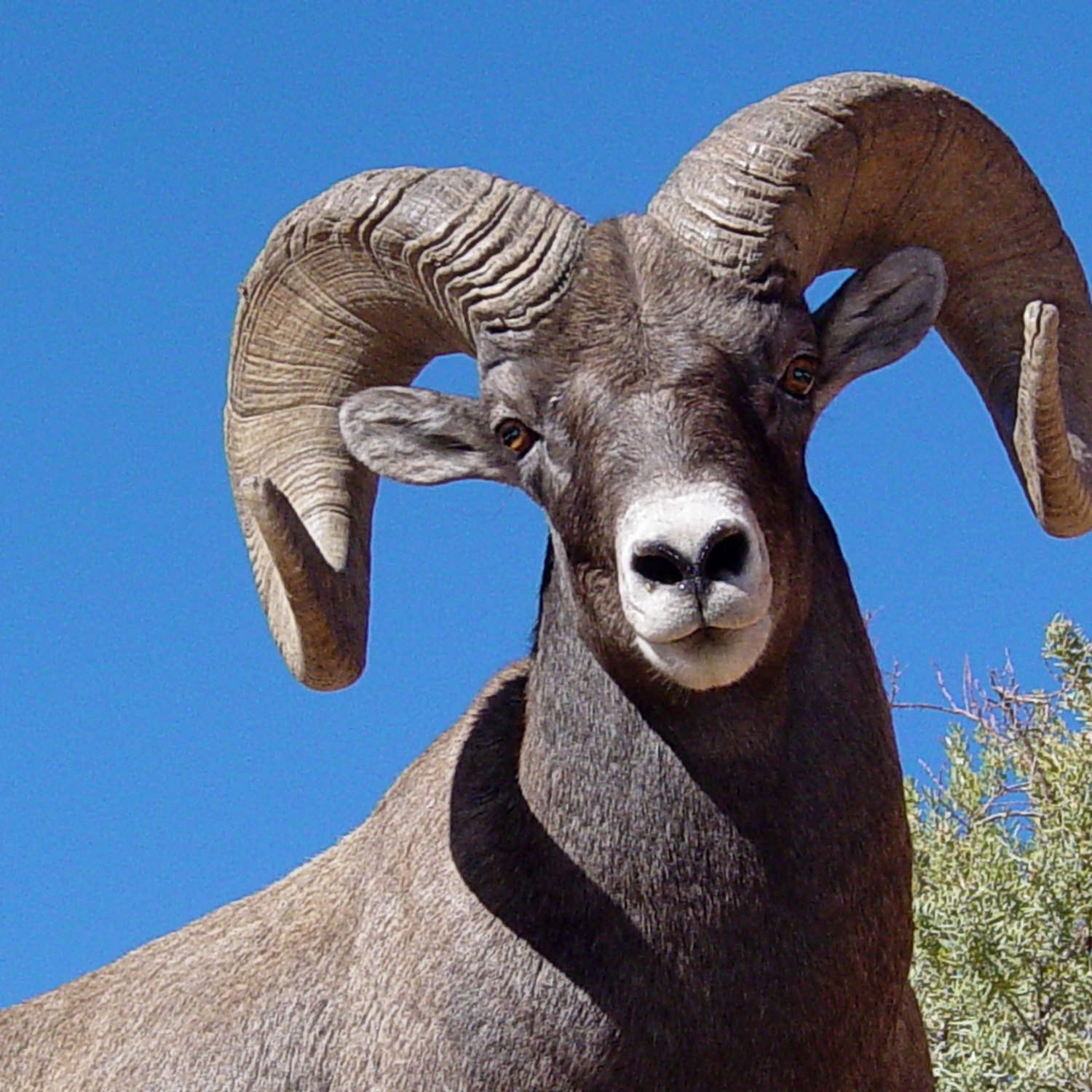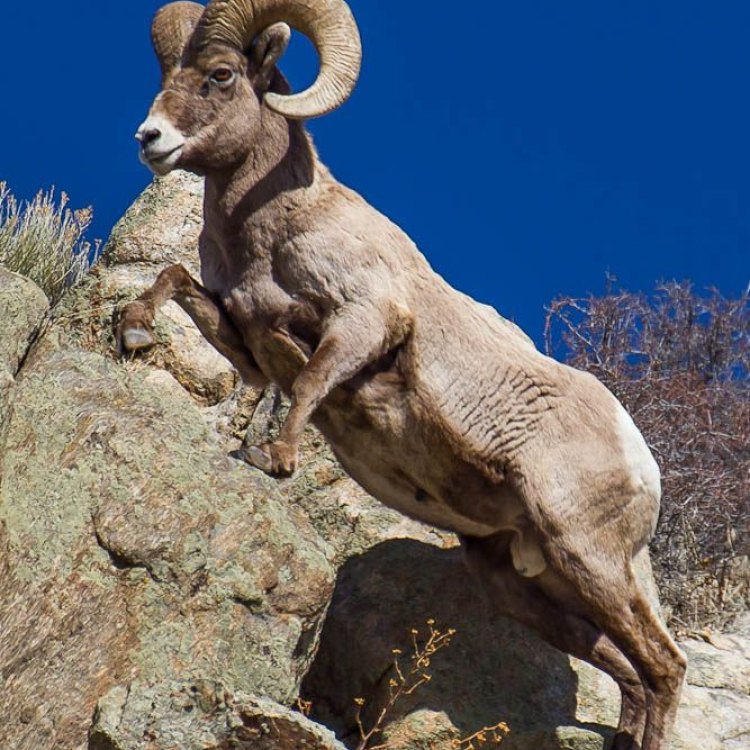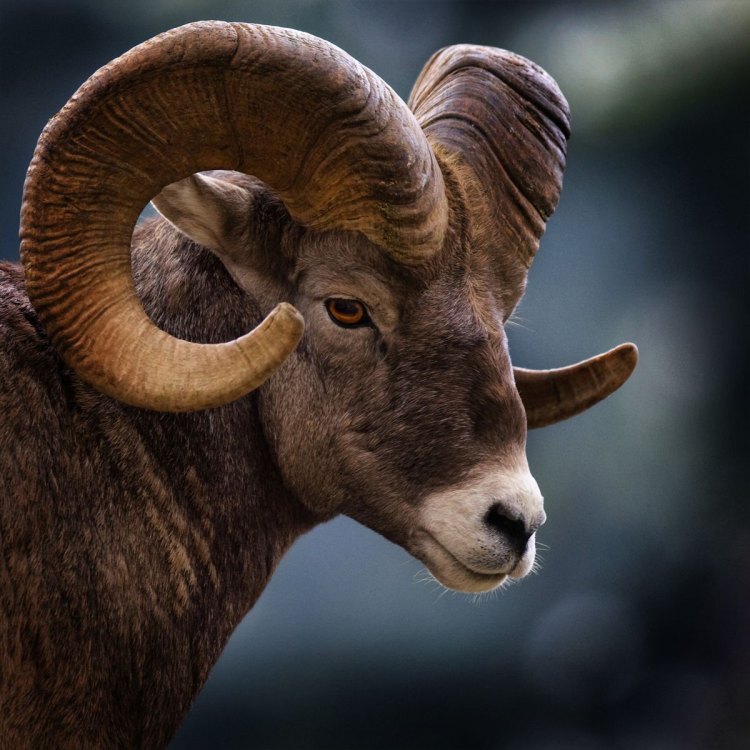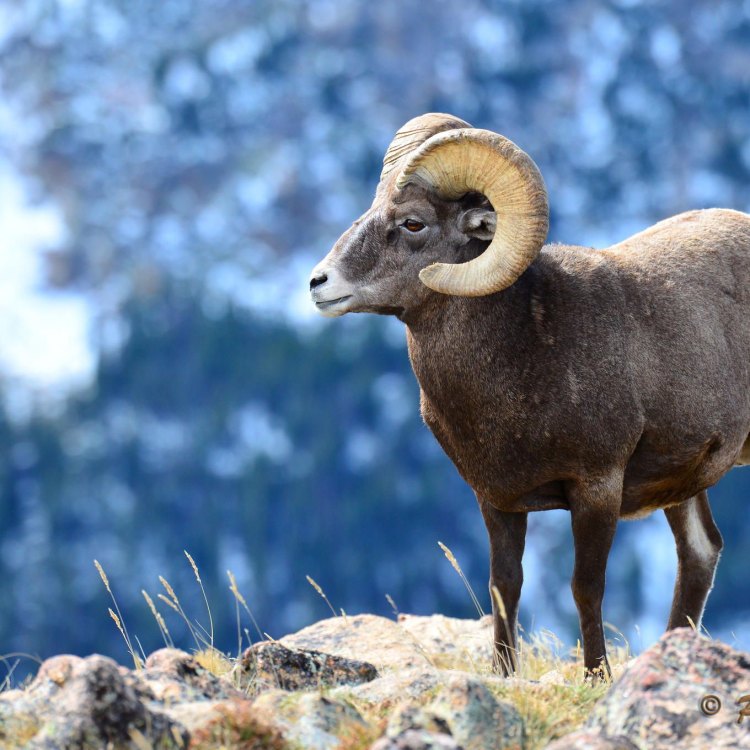
Bighorn Sheep
5 to 6 feet
Introducing the majestic Bighorn Sheep, found in the Western United States and Western Canada. This large member of the Bovidae family boasts a robust body and can grow up to 5 to 6 feet in length. Keep your eyes peeled on your next hike for these iconic animals with their signature impressive horns! #BighornSheep #Wildlife #WesternUS #Canada #Bovidae
Animal Details Summary:
Common Name: Bighorn Sheep
Kingdom: Animalia
Habitat: Mountains and rocky terrain
The Mighty Bighorn Sheep: Surviving in the Rocky Terrain
Nature never fails to amaze us with its diverse and magnificent creatures, and one such animal that captures our attention is the Bighorn Sheep. Known for its impressive horns and ability to traverse the treacherous mountains and rocky terrain, this majestic creature is a true testament to the wonders of evolution.But there is much more to this animal than just its striking exterior. In this article, we will delve deeper into the world of Bighorn Sheep, exploring its scientific name, classification, habitat, feeding habits, distribution, and more Bighorn Sheep.
The Classification of Bighorn Sheep
The scientific name of this animal is Ovis canadensis, but it is more commonly known as Bighorn Sheep. According to the Linnaean classification system, it falls under the Animalia kingdom, Chordata phylum, Mammalia class, and Artiodactyla order. Its family is Bovidae, which also includes other iconic species such as goats, gazelles, and antelopes.Adaptations for Survival
Bighorn Sheep are known for their distinctive horns, which are one of their most remarkable features. These horns are an adaptation that helps them in their everyday lives. Their horns help them in fighting for dominance, defending against predators and regulating their body temperature.Moreover, the male Bighorn Sheep are also known for their characteristic 'butt battles' where they charge at each other with their horns, creating a loud clashing sound. This behavior is essential for establishing dominance over the herd and for mating.
Habitat and Distribution
Bighorn Sheep are found in the mountains and rocky terrain of North America Boas. They are native to the United States and Canada and are primarily found in the western regions of these countries. They have a strong preference for steep, rugged, and rocky terrain, which provides them with shelter and protection from predators.They are highly adaptable animals and can thrive in extreme weather conditions. Whether it's the scorching sun or freezing temperatures, Bighorn Sheep can survive and thrive in their habitat. This is due to their thick coat of fur that provides insulation, and their hooves, which are specially adapted to navigate through rocky and slippery terrain.
Feeding Habits
Bighorn Sheep are herbivorous animals, meaning their diet consists of plants. They are well-known for their ability to climb and maneuver steep mountain slopes to reach their food sources. Their sharp hooves allow them to grip onto rocks and surfaces, providing them with the necessary balance to browse on vegetation.Their diet primarily includes grass, shrubs, and herbs found in their habitat. During the winter season, when food becomes scarce, Bighorn Sheep primarily feed on tree bark and branches.
Bighorn Sheep in the Wild
In the wild, Bighorn Sheep live in herds, also known as bands. These herds can consist of up to 100 individuals, with the females leading the group. The males, called rams, are more solitary and only join the herd during mating season or when competing for dominance.Bighorn Sheep are social animals and engage in various activities such as grooming and playing with one another. They are also known for their impressive speed and agility, with some individuals being able to reach speeds of up to 35 miles per hour.
Despite their formidable horns, Bighorn Sheep are not immune to predators. Their main predators include coyotes, wolves, and mountain lions. However, their sharp eyesight, excellent sense of hearing, and swift climbing abilities make it challenging for predators to catch them.
The Conservation Status of Bighorn Sheep
Unfortunately, like many other animal species, Bighorn Sheep face threats to their population. They have a conservation status of "least concern" according to the International Union for Conservation of Nature (IUCN), but some subspecies are endangered or vulnerable. These threats include habitat loss due to human activities, competition with domestic livestock, and disease transmission.To help preserve and protect Bighorn Sheep, conservation efforts are underway, such as prohibiting hunting and managing their habitat to ensure the survival of the species.
Interesting Facts About Bighorn Sheep
- Despite their name, Bighorn Sheep are not related to actual sheep and are more closely related to goats.- Their horns can weigh up to 30 pounds, and they continue to grow throughout their lives.
- Bighorn Sheep are known to have four-chambered stomachs, allowing them to digest plants that other animals cannot.
- These animals are capable of jumping up to 20 feet in a single leap.
- Bighorn Sheep are highly social animals and communicate through various vocalizations, body language, and scent marking.
In Conclusion
In summary, Bighorn Sheep are magnificent creatures that have managed to thrive in some of the most hostile environments. From their impressive horns to their remarkable abilities, they truly are a testament to the wonders of nature.However, as human activities continue to impact the environment, it is vital to recognize the importance of conserving and protecting these animals. With efforts to preserve their habitat and sustainable conservation practices, we can ensure that future generations will still be able to marvel at the sight of the mighty Bighorn Sheep in the wild.

Bighorn Sheep
Animal Details Bighorn Sheep - Scientific Name: Ovis canadensis
- Category: Animals B
- Scientific Name: Ovis canadensis
- Common Name: Bighorn Sheep
- Kingdom: Animalia
- Phylum: Chordata
- Class: Mammalia
- Order: Artiodactyla
- Family: Bovidae
- Habitat: Mountains and rocky terrain
- Feeding Method: Herbivorous
- Geographical Distribution: North America
- Country of Origin: United States and Canada
- Location: Western United States and Western Canada
- Animal Coloration: Brown with white belly, rump patch, and muzzle
- Body Shape: Large, robust body with a relatively short tail
- Length: 5 to 6 feet

Bighorn Sheep
- Adult Size: Typically weigh between 125 and 300 pounds
- Average Lifespan: 10 to 15 years in the wild
- Reproduction: Sexual reproduction
- Reproductive Behavior: Polygynous
- Sound or Call: Loud, echoing vocalizations
- Migration Pattern: Some populations exhibit seasonal migration
- Social Groups: Males form bachelor groups, females and young form separate groups
- Behavior: Well adapted to living in mountainous habitats
- Threats: Habitat loss, disease, hunting
- Conservation Status: Least Concern
- Impact on Ecosystem: Important grazers in their habitat
- Human Use: Hunting, ecotourism
- Distinctive Features: Large, curled horns
- Interesting Facts: The bighorn sheep is named for its large, curved horns
- Predator: Mountain lions, wolves, coyotes

Ovis canadensis
The Majestic Bighorn Sheep: Surviving and Thriving in the Mountains
The bighorn sheep, also known as the Rocky Mountain bighorn sheep, is a remarkable species that is well adapted to living in the rugged, mountainous terrain of North America. These majestic animals are easily recognized by their distinctive large, curled horns and are an important component of many ecosystems. In this article, we will take a closer look at the unique features and behaviors of the bighorn sheep, as well as the challenges they face and their impact on the environment.Adult bighorn sheep typically weigh between 125 and 300 pounds, with males being larger and heavier than females PeaceOfAnimals.Com. Their average lifespan in the wild is 10 to 15 years, but they have been known to live up to 20 years in captivity. These resilient animals are well adapted to their harsh environment and are able to survive in extreme temperatures and altitudes.
Reproduction in bighorn sheep is sexual, with males and females coming together during the breeding season. However, their reproductive behavior is polygynous, meaning that a male will mate with multiple females. The breeding season typically takes place in late fall or winter, and after a six-month gestation period, females give birth to one or two lambs. The lambs are born with a thick, woolly coat to protect them from the cold and are able to stand and walk within hours of being born.
Sound or call is an important part of communication for bighorn sheep, especially when it comes to mating and defending their territory. They can produce loud, echoing vocalizations that can be heard from long distances, making it easier for them to communicate with other sheep in their herd.
Some populations of bighorn sheep exhibit seasonal migration, moving to different areas in search of food and water Bullmastiff. Males, in particular, have been observed traveling long distances during the breeding season in search of females. This adaptive behavior allows them to survive in their harsh environment and ensures that they have access to necessary resources.
Bighorn sheep are social animals that live in herds, with males forming bachelor groups and females and young forming separate groups. They have a hierarchical social structure, with dominant males and females leading the herd. These herds can range from a few individuals to hundreds, depending on the availability of resources.
One of the most fascinating aspects of bighorn sheep is their behavior and ability to navigate steep, rocky terrain. They are well adapted to living in mountainous habitats, with strong, muscular legs and specialized hooves that allow them to climb and traverse rocky slopes with ease. Their hooves have a hard outer shell that provides traction, while the soft inner sole acts as a shock absorber, protecting their joints from the impact of jumping and climbing. This makes them well suited for living in their rugged mountain homes.
Despite their adaptive behavior and physical abilities, bighorn sheep face various threats in their natural habitat. Habitat loss due to human encroachment is a significant concern, as it limits their access to food and water sources. Diseases, such as pneumonia, can also have a devastating impact on bighorn sheep populations. Additionally, hunting has been a major threat to their numbers in the past, but strict conservation efforts have helped to regulate hunting and protect the species.
Currently, the bighorn sheep is listed as a species of least concern on the International Union for Conservation of Nature (IUCN) Red List. This is due to effective conservation efforts and strict management plans in place in many areas where bighorn sheep are found. These efforts have helped to stabilize and even increase populations in some regions.
Aside from their importance in maintaining balance in their ecosystem as grazers, bighorn sheep also hold cultural and economic significance for humans. They have been hunted for food and their thick, warm hides since ancient times. Today, hunting and ecotourism are popular activities for many people seeking to experience the rugged beauty of the bighorn sheep's habitat.
The most distinctive feature of the bighorn sheep is, without a doubt, its large, curled horns. These impressive horns are used for a variety of purposes, including defending territory, asserting dominance, and attracting mates. Female bighorn sheep also have horns, although they are smaller in size and less curved than those of males. Another interesting fact about bighorn sheep is that they are named for their large horns, not their size or weight like many other species.
Like many animals, bighorn sheep have natural predators that they must contend with. Mountain lions, wolves, and coyotes are all known to prey on bighorn sheep, with mountain lions being considered one of their biggest threats. These predators often target the weaker and younger members of the herd, making it essential for bighorn sheep to live in large groups for protection against these predators.
In conclusion, the bighorn sheep is a remarkable species that has adapted to thrive in the rugged, mountainous terrain of North America. Their large, curled horns, distinctive behavior, and important role in their ecosystem make them a fascinating animal to study and observe. While they face numerous challenges, conservation efforts have helped to protect and preserve this iconic species, ensuring that future generations can continue to admire and learn from the majestic bighorn sheep.

The Mighty Bighorn Sheep: Surviving in the Rocky Terrain
Disclaimer: The content provided is for informational purposes only. We cannot guarantee the accuracy of the information on this page 100%. All information provided here may change without prior notice.












